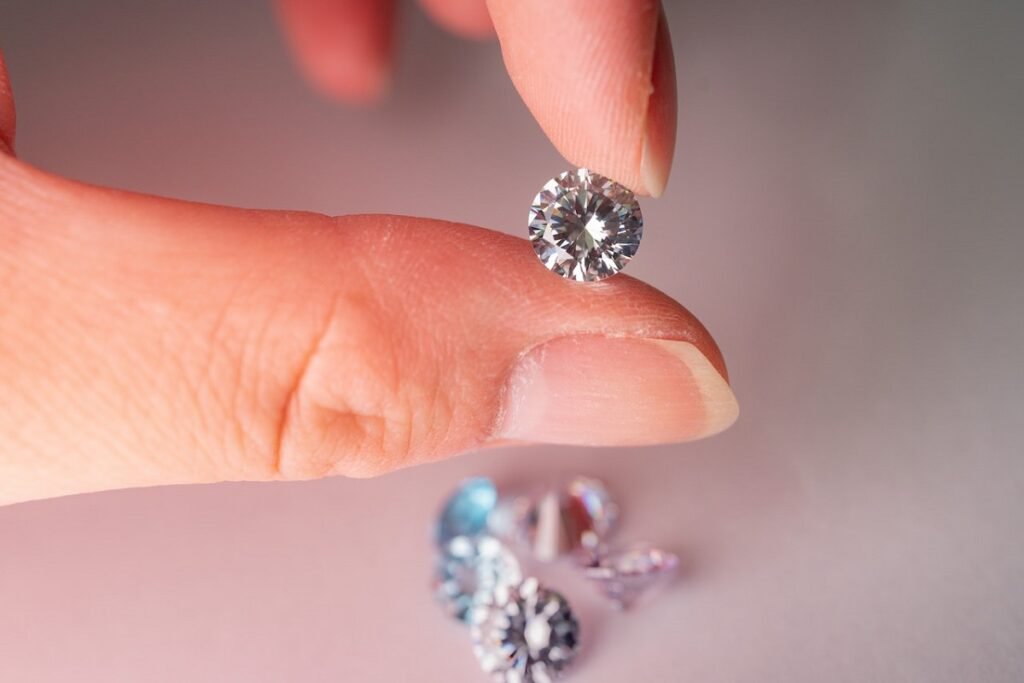How to read your actual carat size? Engagement ring shopping can be fun—until you realize how many options there are in the market. There’s a lot to consider when buying a ring between diamond shapes and carat sizes, not to mention their respective prices. One crucial factor to consider is the actual carat size, as it factors into your budget and how the ring will look when you start wearing it as an everyday addition to your outfit.
What Is Actual Carat Size
As crucial as the process is, before making your ring, here are a few things to remember when determining actual carat size. Let’s begin by looking at the typical sizes and shapes for diamonds.
The Shapes And Their Sizes
Perhaps the most typical carat size for many engagement rings remains the 1-carat variant. Preference plays a role here, so you may wonder, “How do I know my carat size?”
Shapes with the biggest cuts
To maximize your actual carat size, jewelry experts suggest going with the diamond shapes that have the largest surfaces. The go-to favorites include the round-cut diamond, the oval shape, the pear or tear-shaped gemstone, and the marquise like the Bario Neal Nikko Mini Diamond Marquise Ring. All of these diamond cuts tend to maximize the diamond’s face on the ring.
Of course, this can still be affected by the kind of setting that you will use, but for 1-carat diamond size in mm, you will probably end up with up to a 10. mm diamond on your finger.
A unique but big shape
If quirky and unique are more your jam, then you may want to try out other exciting shapes. But if you also don’t want to lose the big-size appearance of the ring, then the emerald or heart shape might work better for you.
When asking, “What is the actual size of 1 carat?” for either style, you may be surprised that they can hold their own against other traditional styles. However, do note that the trade-off may involve your budget. Heart-shaped diamonds are pretty rare the bigger they get in size. Emerald cuts may also be a bit more on the expensive side, especially if you are looking for better brilliance.
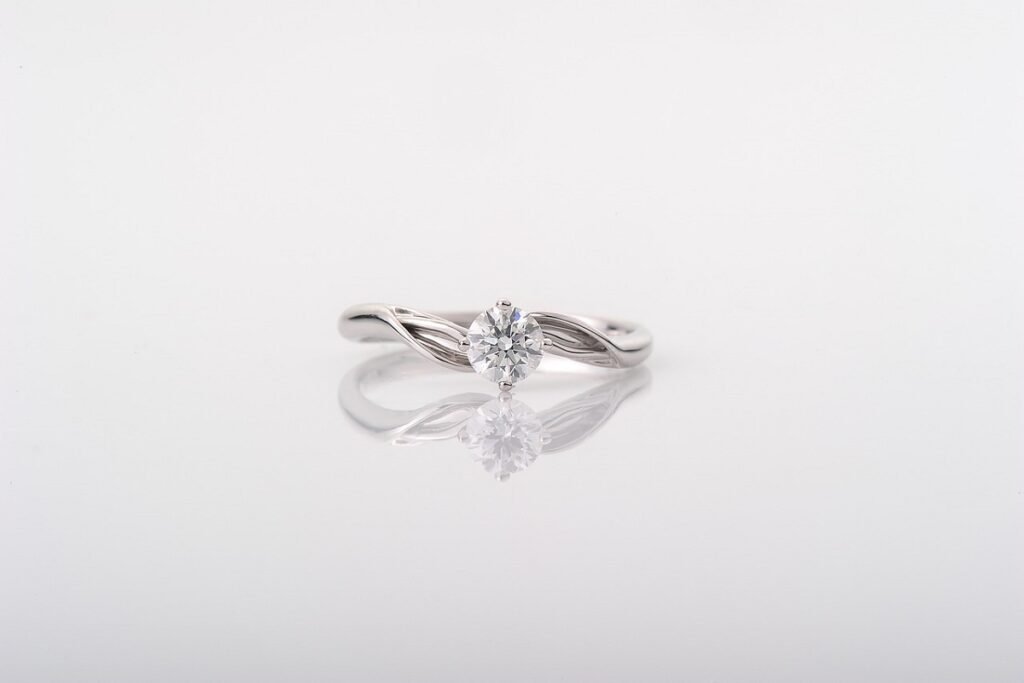
Smaller sizes: These shapes may make your diamonds appear smaller
Unless you are going for a specific cut or if you already have your diamond on you, it’s best to steer clear of these shapes. Rather than a more considerable sparkle, the stone may end up like a 0.05ct diamond size in mm without proper planning. The shapes with a smaller cut include the Asscher and cushion cut.
Converting Carats: How To Find Your Diamond’s Worth
If you want to focus on the carat as your diamond’s measure, then there are a few numbers you may want to remember. When determining the answer to the question, “What is a normal carat size?” you may want to explore two considerations. First, the round shape of diamonds remains the most commonly used basis for sizing other diamonds. Second, even though there are some rough estimates for the formula to find a diamond’s carat weight, the best way to go about this is to tap your trusted jeweler and have your diamond examined.
Commonly, round diamonds with a 1-carat size may factor in at 6.4mm. This sits nicely in the middle of one’s finger, with space left around it when viewed from above. Depending on the setting used, the diamond can appear larger or smaller than its actual carat size. One should also remember that hand size can be quite a significant factor. People with larger hands may find that a diamond will definitely look a lot smaller, even when going for average size.
Conversely, smaller hands can make a diamond look a lot bigger, especially when using all the other jewelry design tricks of the trade. This may be why some old-school jewelry collectors prefer seeing their jewelry up close before making a purchase.
The standard formula for finding carat
Based on the round shape, the formula that most jewelers use is carat weight = diameter x diameter x depth x 0.006. This formula takes a lot of the diamond’s parts into consideration. As per Jewelry Notes, the diameter measures the length from the diamond’s center point as seen from the top to the two points directly across each other.
To find this, you need to make a mark from the center of the stone down to two parallel points of the girdle. The depth measures the distance from the stone’s table up to the culet. Think of it as measuring the diamond as seen from its side, with one point sitting on the table’s surface and the end point being at the tip of the diamond’s bottom.
Once you get a number, however, you may want to give a variance of 5 to 10% of that number. So if you get a .90 ct diamond, there’s a chance that it can be bigger or smaller than that by 5 to 10% of that figure. Again, this is where your trusted jewelry maker can come in, as they can provide a more accurate appraisal of the stone.
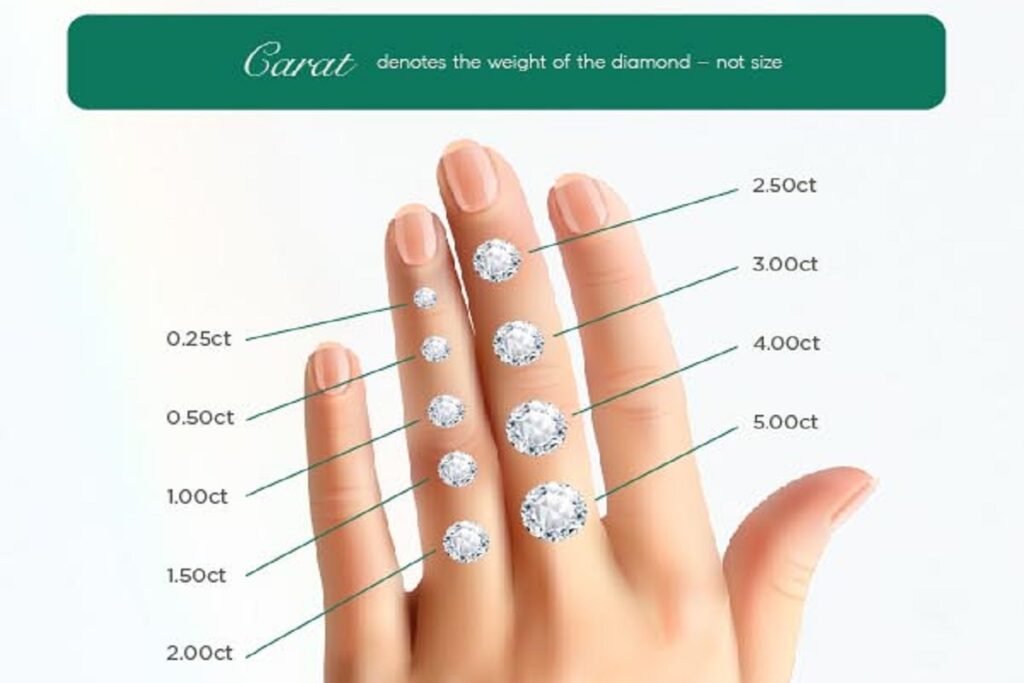
How To Find Your Best Engagement Ring
If you are one of the couples who want to think about their wedding jewelry pieces meticulously, then each decision point needs proper discussion. Make sure to touch on all of these considerations.
Know what the standard size is
Most couples would want their intimate rings to be quite unique. That’s why some people may even opt to have wedding bands or promise rings customized. However, if you have no idea where to start your search, knowing what’s standard may be your step one.
This may be more crucial than you think. More than just comparing sizes, knowing the standard size may clue you in on what’s available in the market. Some jewelry makers tend to go with standard-size diamonds or gemstones, especially if there is already a common demand for them. While preferences may change over time, and some jewelry owners may change their buying preferences to suit their collections’ needs, there’s still a big chance that their supply may depend on the market’s demands.
Thus, many jewelry owners tend to fall back around the 1-carat and below sizes for diamonds, regardless of shape or cut. In some areas, larger carat sizes, such as 1.25 or 1.50 carats, have started to be in demand. Mia Donna believes this trend may be due to the exciting supply from various ethical sources, such as lab-created diamonds.
Compared to natural diamonds, which may be highly reliant on the diamonds produced by nature and mined by companies, lab-created diamonds go through specific processes. Labs can control these processes more, especially as technology improves.
Check what fits your lifestyle.
A person’s lifestyle can play a significant role in whether or not any fine jewelry can keep its outstanding sparkle and shine. Engagement rings, wedding rings, and other personal mementos tend to be worn as everyday accessories. If this is the case, you need to consider just how much activity the wearer goes through before choosing any ring.
Active lifestyles, which entail a lot of movement and physical activity, may require more durable materials. Some precious metals like silver and rose gold can be more sensitive to chipping or tarnishing. On the other hand, some diamond cuts may be more prone to chipping. Marquis and pear-shaped diamond rings can be quite prone to chipping with daily use.
While personal style is definitely a good starting point, sometimes, practicality also needs to be highly considered. For example, an engagement ring with an intricate setting like a cathedral setting or several smaller stones may be pretty to look at. But if you are always on the go, you might find yourself keeping your engagement ring in your pocket or a safer place rather than being able to wear it out for a long time.
Consider what fits a set.
Consider a more expanded version of your jewelry piece if your budget seems too extravagant for one ring. Some couples celebrate their anniversaries with different jewelry gifts. An incoming baby can be a good occasion for an additional promise ring.
Rather than splurging your entire budget on an engagement ring, why not have a customized jewelry set? You can create a matching set with your engagement ring and wedding bands. This works for formal wear and makes your bridal jewelry even more cohesive with your personal style.
Look at the value of the carat on the ring style.
Jewelry experts will note that the carat is not the end of all of your budget. Just because you choose a higher carat does not mean you will end up with the best ring. And even the smaller carat diamonds can become a beautiful piece of jewelry with the proper considerations.
It pays to revisit the three other C’s when buying your diamond. As seen in the different average carat sizes of the most popular shapes, it’s clear that shape plays a significant role in how big your diamond will end up.
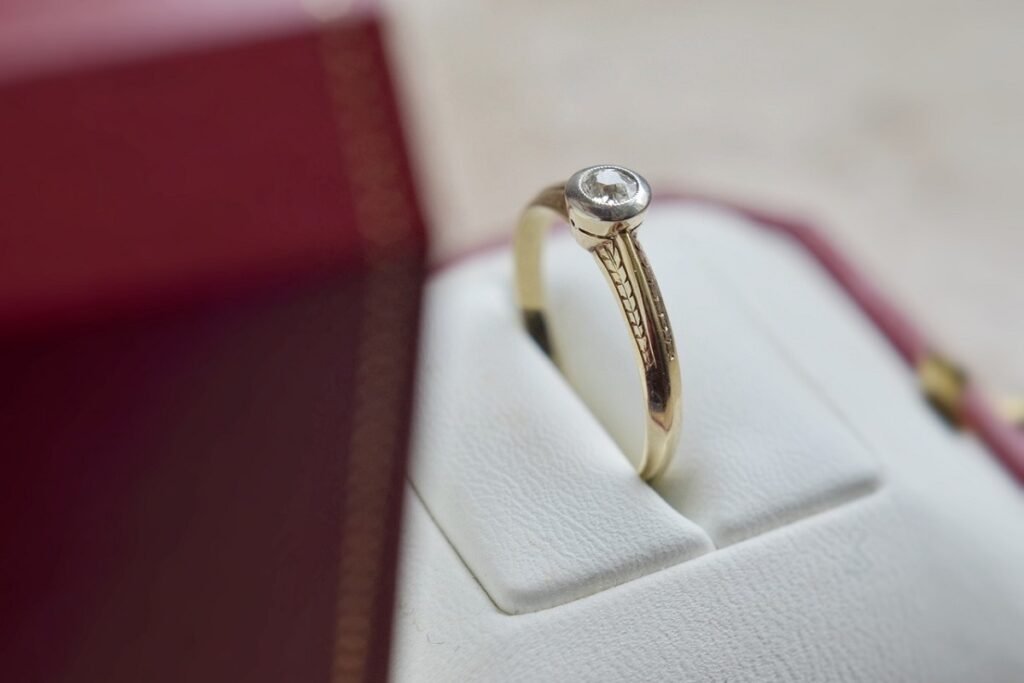
Color and clarity may also have a significant effect, especially for clear diamonds. Gemstones with the highest clarity and a near-colorless status will have a higher price point. But if they are not matched with the most suited metal, you may spend much more without doing your diamond justice.
Take, for example, a near-colorless E-graded diamond with a VS1 clarity rating. This type of diamond is already pretty high up on a budget scale, especially when one considers 1 carat diamond size in mm. But if you use a bezel setting, which makes a diamond smaller, or choose a bright gold metal that can reflect onto the diamond? You may end up with a diamond that looks far smaller than the original size or a diamond with yellow tinges that can dilute its near-colorless and almost no-inclusions quality.
This is why many jewelry experts often recommend seeing a trusted jewelry maker before starting with your fine jewelry piece. If you prefer going with a custom-made engagement ring, look at these elements to maximize the high-quality aspects of your diamond.
Too Little, Too Big, Too Much: How To Make Smart Changes With Carat Size
Just because you’ve decided on the actual carat size of your ring does not mean it has to be a forever one. In case you find yourself wondering about a new style for your engagement ring but with no budget to have another one made, why not consider restyling it?
Better budget? Resetting works later on.
After saving for many different things in life, it may not be impossible to find yourself one day with an extra budget that you can use for better jewelry. Instead of reselling your engagement ring, you can consider adding diamonds to bring up the ring’s carat size. Resetting the ring to include flanked smaller diamonds is a great way to keep your engagement ring, but perhaps add a few more stones–possibly to signify some milestones along the way, too!
Too big? Give it time
Having a bigger-sized diamond may be a happy problem for many jewelry owners. But if it’s your first time enjoying fine jewelry, yet you find yourself asking, “What is a reasonable carat size?” it’s possible that your diamond may be a size too big.
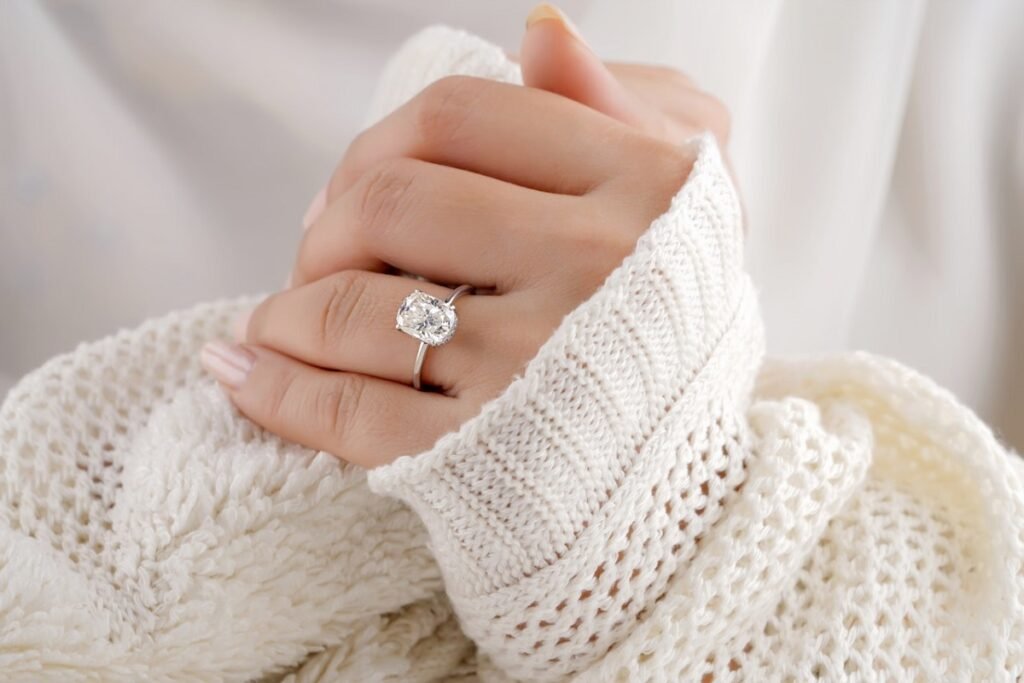
But before you consider swapping it out, why not wear it more often? As one wears a jewelry piece more often, they become more acclimated to the diamond’s weight, style, and size. Before you know it, your ring may become standard-sized in your hand and ready for everyday wear moving forward.

